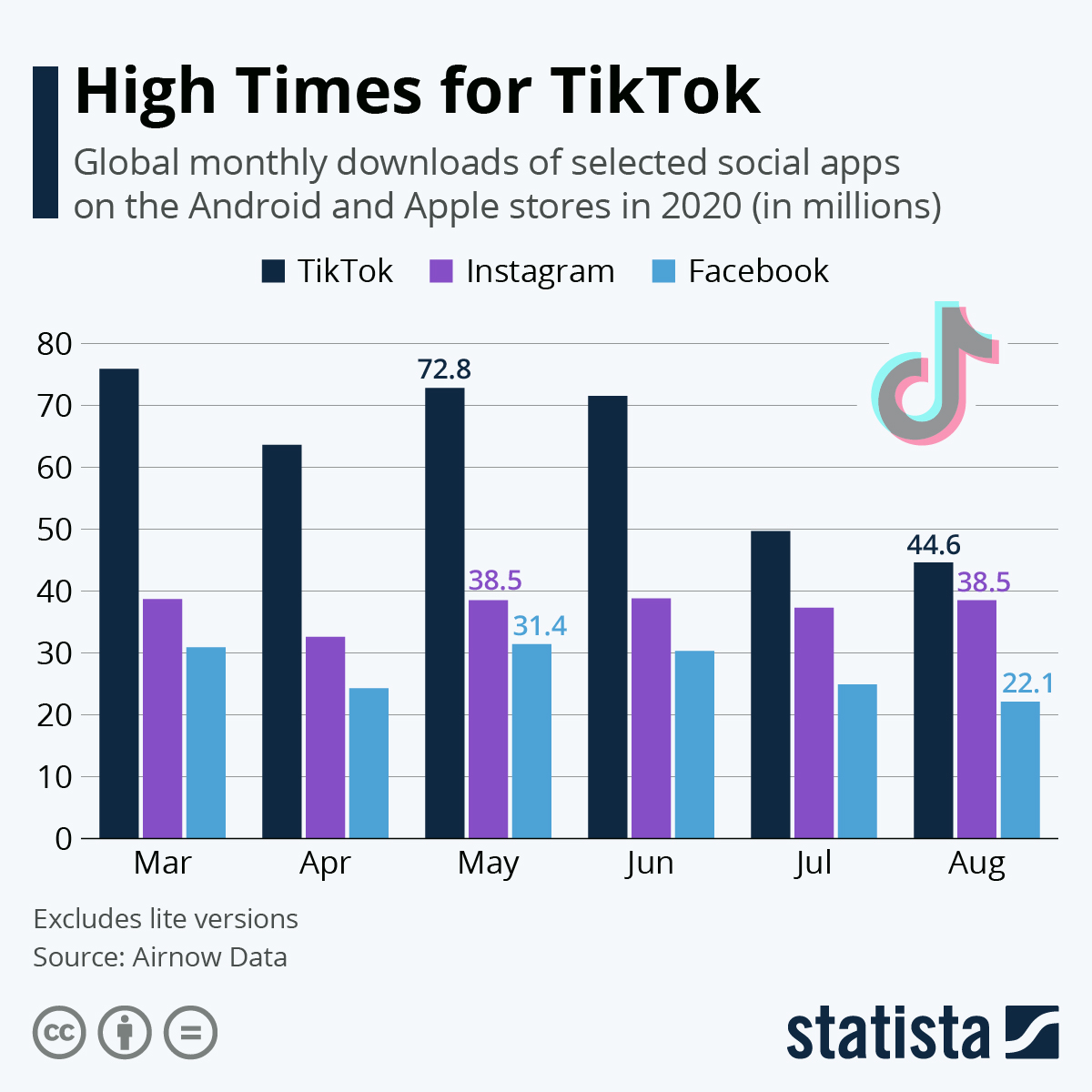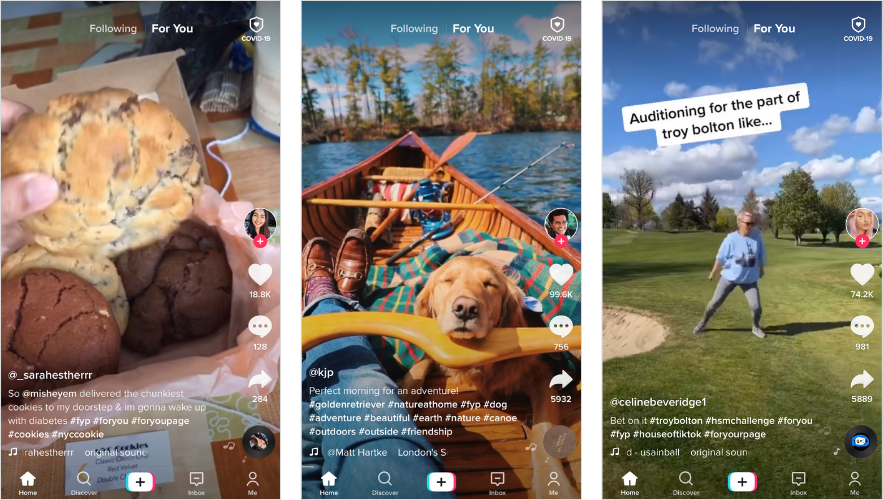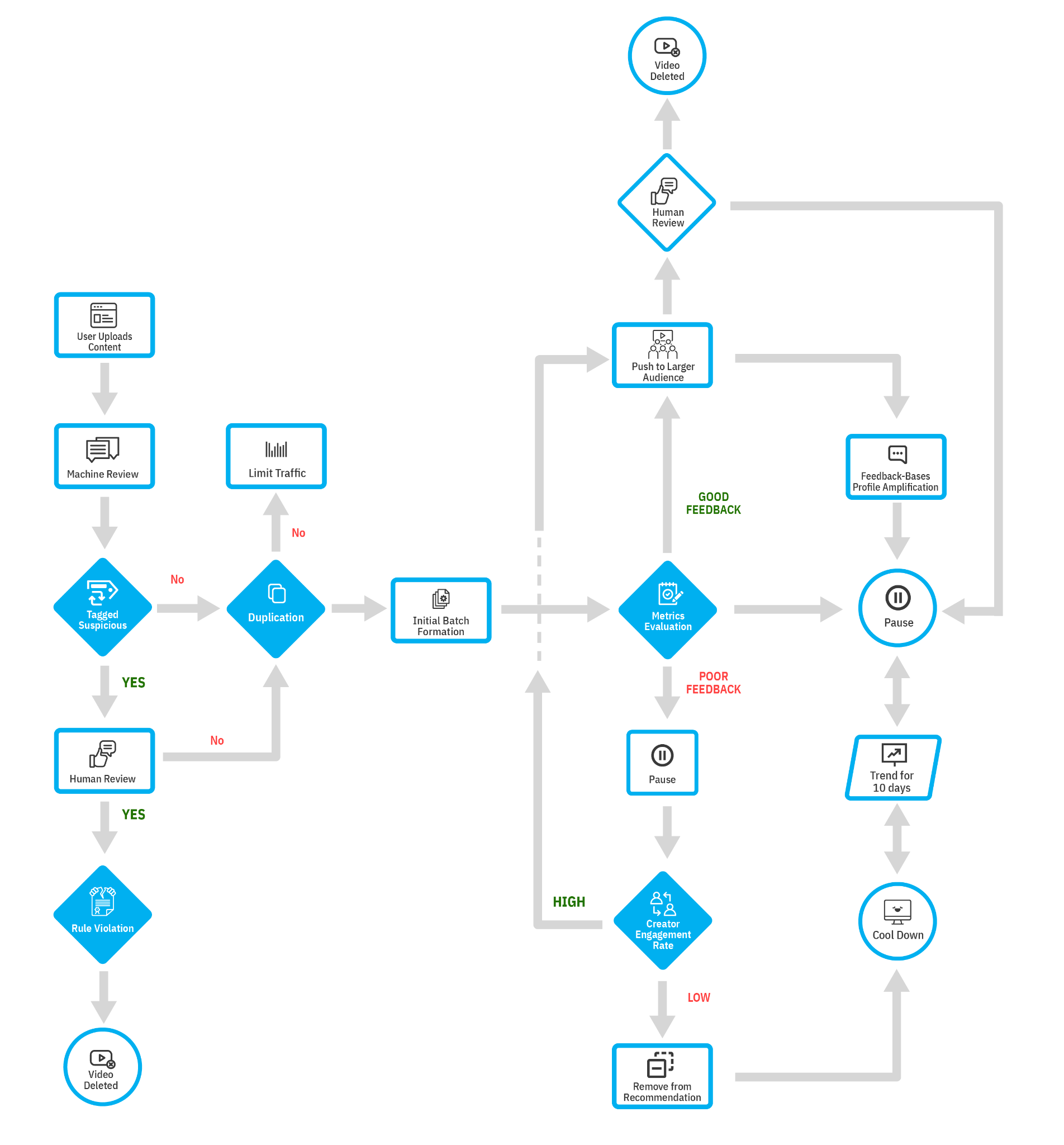Unless you have been living under a rock, everyone has heard about the internet sensation that is TikTok.
With nearly 1.8 billion international TikTok users and approximately 1.4 billion Douyin (as TikTok is known in China) users per month, stating that the video-sharing app is “popular” would be a grave understatement. As of December 2022, it has reigned supreme as one of the most-loved apps with nearly 3 billion lifetime downloads.

So what transformed TikTok from a lip-syncing, renegade dancing app to the center of all viral trends? And what is the secret ingredient that makes it so addictive and unputdownable?
The answer lies in the highly sophisticated TikTok AI algorithm and its AI-powered recommendation engine.
Let’s deep dive into the AI algorithm that has catapulted TikTok to new heights.
What Made TikTok’s “For You Page” (FYP) So Unique?
While YouTube, Facebook, and Instagram are also bustling with cute cat or derpy dog videos, TikTok took it to a whole new level with its AI-driven algorithmic personalization. You can check out a detailed week-by-week comparison of performance metrics of various social media sites for the last eight years here.
TikTok helped content creators connect with audiences based on commonalities to develop a symbiotic ecosystem. And to achieve this effect, it followed a two-pronged strategy - curate a personalized “For You Page” to retain app user interest and boost influencer reach to reward them for creating valuable content.

Employing these techniques kept creators and viewers busy and got them hooked to the app. Allow us to illustrate how it gains an edge over other social platforms.
Pop diva Jennifer Lopez posted the same video on Twitter and TikTok. She has about 45 million followers on Twitter and 5 million followers on TikTok. This video received 2 million views on Twitter, while TikTok fetched 71 million views, which was highly disproportionate to the 5 million followers. This stark difference is a clear indication that TikTok is doing something right that allows it to strike a chord with its audiences.
Key Components of the TikTok AI Algorithm and its Recommender System
TikTok changed the rules of the game with its user-centric design.
The chances of getting viral were delineated from the number of views or followers of the content piece or account. On the contrary, it focused on capturing user information to learn more about their preferences and deploying AI-powered recommendation engines. It harnessed its self-learning capabilities to fine-tune the user preferences and only recommend content that the viewer would like.
The recommendation engine archetype contained three building blocks:
- A self-training AI engine,
- Content tags, and
- User profiles and scenarios.
The correlation between these elements depends on the data, its features, engagement metrics, and the governing algorithm. This interplay has a clearly defined motive - to keep audiences on the app for as long as possible.
Under the Hood: Possible Recommendation Workflow
While there is not enough transparency on how TikTok’s core algorithm operates, there are a few working theories based on expert analysis and user experiences.
Some posit that the videos are pooled into batches that score the content and push it towards a wider audience. As per this Batch Theory, the fate of a piece of content depends on what basket it ends up in. Others believe that TikTok follows an Authority Ranking system that taps into viewer’s interactions, such as likes, shares, etc., to position certain content creators to feature on your feed to get them in the limelight. For all we know, it could be a mixture of both (plus more)!
Either way, it all boils down to the user behavior that serves as breadcrumbs to offer direction to the algorithm.

When reverse engineered, TikTok’s AI-powered recommendation workflow could possibly play out as follows:
Step 1: Auditing of Content Using AI and NLP
Once the user uploads the content, it undergoes a dual audit to eliminate any malicious or sensitive content.
First, the user-generated content is examined by a computer vision-based engine that flags copyright violations. It also performs traffic suppression for duplicate content. At the same time, the machine review utilizes NLP to generate transcriptions to understand the content better. Finally, the metadata is taken into account to check whether the content conforms to the rules and regulations.
During the second stage of the audit, a manual review is performed on the reported content. If the videos are found to be in violation of the terms and conditions of the platform, it is deleted.
Step 2: Initial Batch Processing
Once the content has passed the audit, it enters the information flow funnel.
Based on content features, they are bunched in a cold start traffic pool that determines the exposure. This cold start acts as a level-playing field as everyone, from a new user or an influencer, starts from scratch here.
Step 3: Metric-Weighted Content Performance
By pushing the content in the initial traffic pool, the platform collects data to analyze audience response. Key metrics captured in this stage include the number of likes, unique views, complete views, comments, reposts, follower increase, shares, rewatches, etc.
Based on these inputs, the recommendation engine can weigh the performance of the content and assign a score to it, indicating quality, relatability, and engagement. The high-performing content, limited to the top 10%, steps up in batches with greater traffic exposure.
Step 4: Feedback-Based Profile Amplifier
Using the feedback collected in the previous step, the traffic pool undergoes further analysis by the AI engine for reaching a decision on the further course of action. The outperforming content is further amplified to target user groups and profiles, which strengthens its position.
Step 5: Tailored Trending Pools
Less than 1% of the overall content ends up on the coveted trending pool. Such content pieces enjoy unrivaled exposure that is many folds higher than any of their counterparts. These top-tier content pieces are promoted indiscriminately, regardless of the user profile and their interests. For example, the videos for BLM protests were magnified to this level.
Step 6: Delayed Ignition
Another component of TikTok’s AI-based workflow is delayed ignition. Here, the existing content is reviewed and later gains enormous traction after weeks.
The content may come to highlight for two main reasons:
- TikTok’s AI algorithm, fondly called the gravedigger, mines through older content to identify high-quality content or user accounts that deserve recognition. It labels the profile and pushes it to prominence.
- If a user happens to end up on the FYP, viewers may visit some of their older content and engage with it. This is nicknamed the trendy effect, which breathes a new life into your content.
Final Thoughts
Regardless of the algorithm or workflow, the AI-based recommender system is the core element for TikTok’s growth and success. It has maintained healthy engagement rates, lowered exit rates, and promoted content creation - the perfect recipe for any digital application. The same extends to other lines of businesses that are operating in the digital ecosystem.
So whether you are an eCommerce website or a content streaming platform , an AI-driven recommendation engine can boost businesses across different industries and verticals.
Don’t know where to get started? Contact the experts at Argoid and allow us to pave the way!
. . .


.png)
.png)


